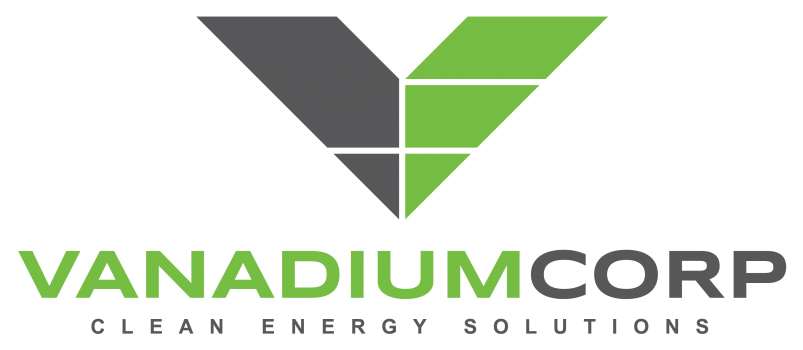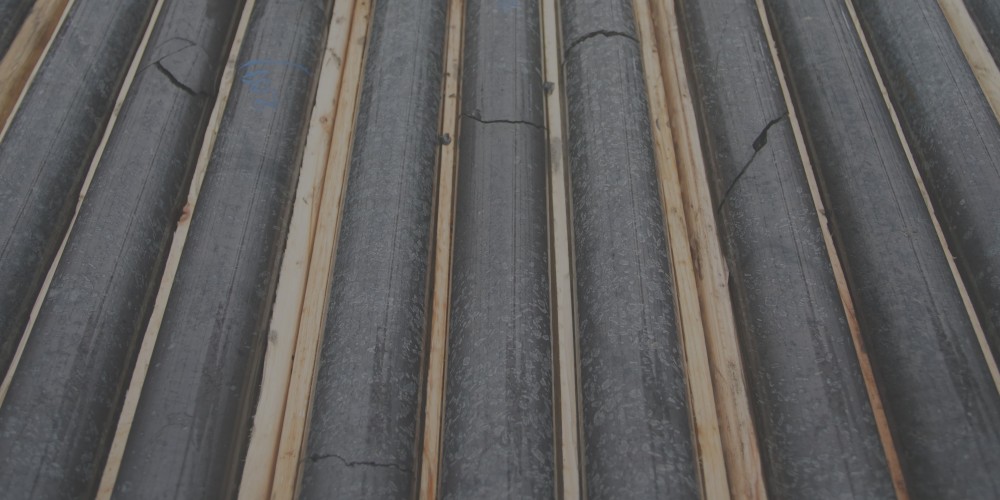Vancouver, British Columbia – April 24, 2024 – VanadiumCorp Resource Inc.…
VanadiumCorp Comments on New US Geological Survey
Click here for the full USGS Report in PDF…
VanadiumCorp Comments on New US Geological Survey Recognizing Vanadium and Titanium As Critical To A National Economy and National Security And President Trump’s Subsequent Executive Order
VANCOUVER, BRITISH COLUMBIA – December 21, 2017 VanadiumCorp Resource Inc. (TSX-V: “VRB”) has commented on the release of the U.S. Geological Survey’s report on the critical mineral resources of the United States and President Donald Trump’s order to develop a federal critical mineral strategy.
The report lists 23 metals and minerals that are critical to “the national economy and national security of the United States.” Vanadium and titanium are two of the 23 materials listed, recognized as critical to “national economy and national security” and are just a few of the metals and minerals on the list for which the U.S. is import-dependent. The 850-page report is the first comprehensive update on US mineral resource landscape since the 1973 Oil Crisis.
The report is followed by a Presidential Executive Order to develop a federal strategy to reduce foreign dependence on critical minerals.
VanadiumCorp owns a significant vanadium-titanium-iron bearing resource base in one of the world’s most mining-friendly jurisdictions, Quebec, Canada. VanadiumCorp is also exploring licensing and jointly developing innovative, carbon-free process technology that unlocks new strategic supplies of vanadium and various co-products, including titanium.
The reports states:
Regarding vanadium for energy storage: “The emerging need for large-scale electricity storage makes vanadium redox-flow batteries (VRBs) a major potential future use of vanadium. Because of their largescale storage capacity, development of VRBs could prompt increases in the use of wind, solar, and other renewable, intermittent power sources. Lithium-vanadium-phosphate batteries produce high voltages and high energy-to-weight ratios, which make them ideal for use in electric cars. Vanadium use in lithium batteries is expected to increase to 1,700 metric tons in 2017 from 200 metric tons in 2012 (Perles, 2013).” “The VRB…” “consists of an assembly of power cells in which two vanadium-based electrolytes are separated by a proton exchange membrane. The main advantages of the VRBs are (a) their nearly unlimited capacity, which is made possible simply by using sequentially larger storage tanks; (b) their ability to be left completely discharged for long periods of time with no detrimental effects; (c) the ease of recharging them by replacing the electrolyte if no power source is available to charge it; and (d) their ability to withstand permanent damage if the electrolytes are accidentally mixed (Polyak, 2012).”
Regarding alloys and steel: “Vanadium is irreplaceable for its role in aerospace applications because vanadium-titanium alloys have the best strength-to-weight ratio of any engineered material yet discovered.” Vanadium, when combined with titanium, produces a stronger and more stable alloy, and when combined with aluminum produces a material suitable for jet engines and high-speed airframes. No acceptable substitutes exist for vanadium in aerospace titanium alloys.
“The high-strength, low-alloy (HSLA) steels containing vanadium are widely used for the construction of auto parts, buildings, bridges, cranes, pipelines, rail cars, ships, and truck bodies, including armor plating for military vehicles (Polyak, 2012).” “Only a limited degree of substitution is possible among these metals, however. Replacement of vanadium with other mineral commodities requires significant technical adjustments to the steel production process to ensure that product specifications and quality are not compromised. For example, use of vanadium generally requires less energy consumption during production than does niobium to give equivalent steel properties. Therefore, substitution for vanadium is normally not considered for short-term changes in market conditions because of the considerable effort involved in implementing the change.”
“Additionally, significant amounts of vanadium are available for commercial use as a byproduct of petroleum refining, and processing of coal, tar sands, and oil shales may be important future sources.” These types of feedstocks as well as virtually any other vanadium bearing waste or primary source can now be processed carbon free with high efficiency VanadiumCorp and Electrochem combined technologies. The exclusive products targeted include VanadiumCorp ElectrolyteTM and many specialty metals including titanium that are also included in 23 critical materials listed in the report.
The Report, formally titled “Critical Mineral Resources of the United States Economic and Environmental Geology and Prospects for Future Supply,” (USGS Professional Report 1802), updates USGS Report 820, issued 44 years ago during the 1973 oil crisis. The report presents updated reviews of 23 mineral commodities and commodity groups viewed as critical to a broad range of existing and emerging technologies, renewable energy, and national security. The Report represents the U.S. Government’s most comprehensive assessment of the nation’s mineral resource profile and potential, serving to inform federal mineral policy.
Secretary Ryan K. Zinke, of the Department of the Interior, which oversees the USGS, stated on the release of the report: “I commend the team of scientists at USGS for the extensive work put into the report, but the findings are shocking. The fact that previous administrations allowed the United States to become reliant on foreign nations, including our competitors and adversaries, for minerals that are so strategically important to our security and economy is deeply troubling. As both a former military commander and geologist, I know the very real national security risk of relying on foreign nations for what the military needs to keep our soldiers and our homeland safe.”
The USGS study was followed by the signing of a new Executive Order by President Trump, “A Federal Strategy to Ensure Secure and Reliable Supplies of Critical Minerals.” The Executive Order directs the U.S. Secretaries of the Interior and Defense to prepare a list of critical minerals within 60 days, and to develop and report within 6 months a strategy for reducing foreign dependence on those metals and minerals deemed critical. “This executive order will prioritize reducing the Nation’s vulnerability to disruptions in our supply of critical minerals safely and responsibility for the benefit of the American people,” said President Trump.
VanadiumCorp is developing and exploring licensing potential for an innovative, carbon-free process technology that unlocks a new strategic supply of vanadium and coproducts such as titanium. Jointly developed and owned with Electrochem, this innovative chemical process allows for integrated and carbon-free recovery of critical metals needed on a global scale. VanadiumCorp also holds a significant vanadium-titanium-iron bearing resource base in mining friendly Quebec, Canada.
Electrochem Technologies & Materials Inc. is a private Canadian corporation that invents, develops, patents, scales-up and commercializes proprietary chemical, metallurgical and electrochemical technologies that are innovative, and sustainable. Electrochem owns the exclusive rights for its patented iron electrowinning process worldwide. The company also manufactures industrial electrodes and produces tantalum and tungsten fine chemicals.
VanadiumCorp ElectrolyteTM is a registered trademark representing the new industry standard. VanadiumCorp is developing a baseline of battery grade quality compliant with international standards.
On behalf of the board of VanadiumCorp:
Adriaan Bakker, President and Chief Executive Officer
For more information, contact VanadiumCorp:
John Hewlett, Director, Business Development
By phone: 604-560-8251
By email: info@vanadiumcorp.com
Website: www.vanadiumcorp.com
Neither the TSX Venture Exchange nor its Regulation Services Provider (as that term is defined in the policies of the TSX Venture Exchange) accepts responsibility for the adequacy or accuracy of this release.
FORWARD LOOKING STATEMENTS: This news release contains forward-looking statements, which relate to future events or future performance and reflect management’s current expectations and assumptions. Such forward-looking statements reflect management’s current beliefs and are based on assumptions made by and information currently available to the Company. Investors are cautioned that these forward looking statements are neither promises nor guarantees, and are subject to risks and uncertainties that may cause future results to differ materially from those expected. These forward-looking statements are made as of the date hereof and, except as required under applicable securities legislation, the Company does not assume any obligation to update or revise them to reflect new events or circumstances. All of the forward-looking statements made in this press release are qualified by these cautionary statements and by those made in our filings with SEDAR in Canada (available at WWW.SEDAR.COM).


